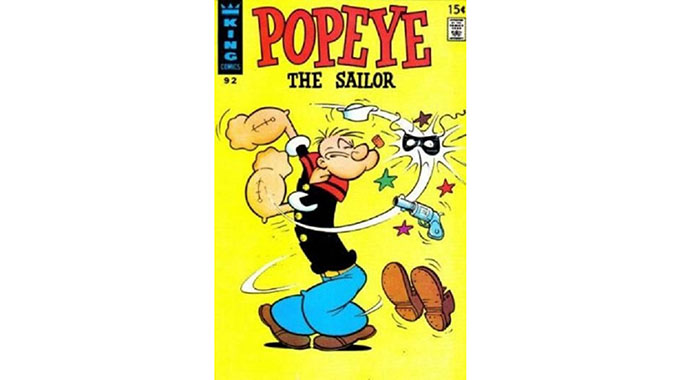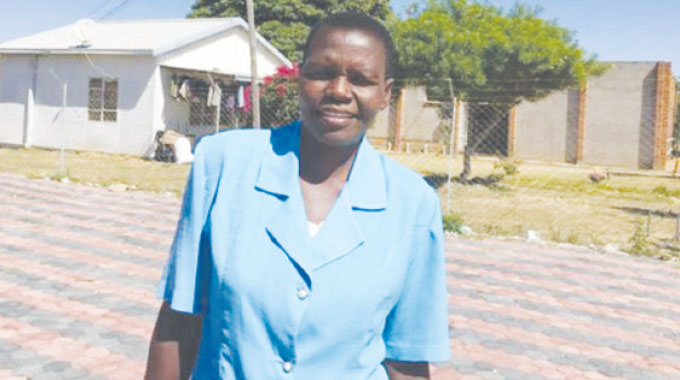Old ideas in new situations

David Mungoshi Shelling the Nuts
In the melancholic, but mellifluous, “As Tears Go By,” the Rolling Stones soulfully sing:
It is the evening of the day
I sit and watch the children play
Doing things I used to do
They think are new
If you have ever been a poor street urchin or young country bumpkin with no new-fangled status toys to play with, you will know just what it meant to be unable to rush outside and play with the others of your age group in the blessed dust. Indeed play was so important that educational psychologists and others recognized it as a valuable socialisation tool.
It was common to hear small children tell their mothers that they were going outside to play. As a child, you needed no invitation or special purpose to go outside. It was sufficient just to say you were going outside to play, and play you did.
And countless others like you everywhere would be doing exactly what you and your bosom playmates would be doing in the morning sun or under the moonlight. Sometimes you would be outside playing in the mud and the puddles after some rain had fallen. It was a child’s world in some ways, with lots of play and running about. In the process you learned, though you didn’t know it, coordination skills involving eye and hand or eye and foot.
And you also learned some diplomacy and how to negotiate your way around. I remember a small boy at the local village shops somewhere deep inside a rural area where I once had the good fortune to live and work.
The boy’s playmate next door was the proud owner of a tricycle which he liked to flaunt every so often. Our boy wanted so much to be on that tricycle, but could not unless the other one agreed or was tired enough to let him have a go.
So our little boy worked out a way of expediting things so that weariness in the other boy could happen more swiftly and readily. He volunteered to push the tricycle from behind even as its owner was paddling. This created speed and thrills.
Sometimes it worked and sometimes it didn’t. It all depended on the mood that the other boy was in. On occasions when he did not succeed, his face had a predictably downcast look.
Teachers from the 50s and 60s of the last century were adherents of “the play way method” where a teacher would, in the classroom, approximate as closely as possible, a natural play environment for the children. This, however, has since been replaced by new money-making pastimes in which the child has little say, and willy-nilly, learns well how to become addicted and enslaved.
This is why the Stones’ song can, on occasion, make anyone sad and nostalgic. What to do about the deficits is the question, and a bit of soul-searching here is likely to be handy. Marxists hold that religion is the opium of the people, meaning that it dulls one’s senses to the pain of degradation and poverty.
The objective reality of one’s existence becomes a matter of divine choreography. In this context, religion boils down to saying everything can be fixed through faith and piousness. This stance can either stall progress or accelerate it, depending on disposition, chance and diligence.
In the same vein, colonial governments, particularly in what once was the Federation of the Rhodesia and Nyasaland, used ploys to lull the oppressed masses into a false sense of security and well-being. So-called beer-gardens and beer-halls were built around the townships with reckless abandon. These places were intended to be vast conveniences for the purpose of inebriation. A defining characteristic of these drinking places was the sheds under which groups of imbibers sat and shared cylindrical white plastic containers of frothy traditional brew.
Everyone drank from the same container which was passed around. There usually was a formidable collection of these beer containers on the floor in each shed. As soon as one was emptied, they went on to the next. The whole thing was a cooperative venture.
If you came from Rusape or Murewa, you knew where to go for your guzzling and camaraderie. Burial societies operated from these beer-gardens as well.
Sporting types could join boxing clubs or football clubs, or be in acapella groups that entertained the crowds for free at weekends. All such clubs were ethnic in origin and identity. Thus, in Bulawayo, men from Rusape either played for or supported a team called Eastern Brothers. Highlanders FC was Matabeleland Highlanders and Zimbabwe Saints FC was Mashonaland FC.
Saturdays in the high density suburbs were colourful and unique, more especially so in KwaBulawayo. Traditional imbube music was steadily taking root everywhere. It dazzled some and made others nostalgic for the good old days.
Bulawayo-based groups like “Crown Figure” and ‘The Zulu Darkies” were at the forefront of popularising imbube.
“Gwelutshena” became a hit, as did “Stimela Mbombela.” Lovemore Majaivana recorded a version of “Stimela Mbombela”. Majaivana was adept at ingquzu, the energetic Nguni dance in which the dancer attached soft padding to the insides of his feet and “clapped” one foot against the other. The impact created a loud rhythmic sound.
The “Zulu Darkies similarly were very popular for their rendition of “Ubogcina Unyokozala Mfana,” a melodious traditional piece. Even though we did not know it then, the trajectory towards Black Umfolosi had begun. All these things set me thinking about how we can make use of the past to impact upon the present and the future. A major problem of our times is the unwillingness, and one might even say, the inability by citizens to seize the initiative and influence what happens around them.
The question is, “How is this to be done?” I want to suggest that we do this by addressing those things that make us dependent on packaged opinions.
Where has all that independent reading, thinking and analysis gone? Are we doomed to become couch potatoes in perpetuity? I yearn to hear boys and girls everywhere discuss the books they have read and explain why they like them.
It is time to forcefully bring back the reading culture as well as the hunger and thirst for knowledge.
If Zimbabwe sent people to Japan to study the Comic Market (Komikku M’ketto in Japanese) in order to understand the concept and link it to the “manga” held in Japan annually, there would be handsome dividends afterwards. Manga has grown and diversified so much in Japan that Jordan Sievers, a staff writer on culture at the Japan Times, writes:
Last year’s event, which centred on the theme of “Manga: Not Just a Japanese Thing,” showcased many different comic styles from around the world. This year, taking place alongside the main festival, is the companion event called Comitia, where amateur and professional artists will be given the opportunity to display and sell their own original works to the public. The comic can be a very potent tool for developing an unassailable reading culture and sustaining it. A few years back, some of us did a workshop at the Spanish Embassy in Harare to try and kick-start a comic creation and reading project. The resource persons included graphics people, poets and short story writers. The result was quite telling and instructive and if we had continued, we could by now have begun to have a significant level of participation. There was a time in this country when Popeye comics, cowboy comics as well as love and romance comics were in vogue. It was through reading these comics that many of us were able to develop a strong interactive base in English.
War comics too were quite popular and stories were based on battles against the Japanese in Burma (Myanmar) and Malaya (Malaysia) or on the Russian war front against the Nazis. After devouring all these, it was easy to move on to novels and short stories. We can begin to resuscitate the boys clubs that serviced many high density suburbs in the olden days.
These were the places where you learned how to play the guitar and penny whistle as well as table tennis and slogger (an approximation of today’s tennis).
You could even read books there or just chill. My club was Nongoma in Mzilikazi Village. One could also go to Thabiso in Makokoba.
At some point you outgrew the boys club and moved on to the youth club which was an integrated entity to which both boys and girls belonged.
Ballroom dancing was a popular pastime that helped groom young people into harmonious graceful partners.
This time around the country could introduce girls’ clubs where girls can be by themselves and be coached and groomed by invited experts. Girls and boys reading clubs of say, up to age 16 can be used to develop regular reading habits and book-sharing.
The challenge, going forward, is how to excel at integrating old and new.









Comments